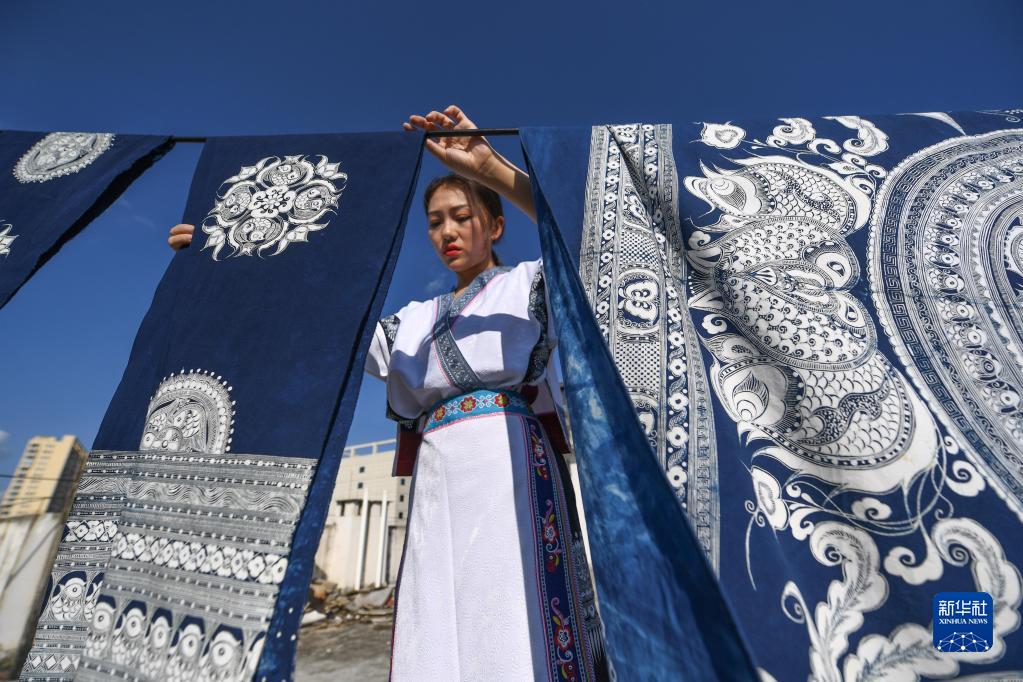Guizhou Echo | 贵州宝藏·蜡染

蜡染是贵州著名的传统工艺。简单来说,就是用蜂蜡作为着色抑制剂,在染色前在白布上作颜料。基本工艺由熔蜡、拉蜡、染布、蒸煮、漂洗组成。是中国古代三大染色工艺之一。蜡染布在贵州各民族聚居区普遍存在。是衣服等日常用品的基础面料。它简单,看起来比白色棉布更坚固。
在整个过程中,蜡画是最具创意的一步。手艺人通常已经熟记要画什么,以铜刀为笔,直接在布上画出图案。染料取自贵州常见的板蓝根。当蜡痕凝固时,形成天然的防污层。浸染后布经蒸煮,蜡痕融化,曾经有蜡痕的地方变白,形成青花图案。最后,冲洗掉多余的染料,然后将布晾干。
Batik is a renowned traditional craft in Guizhou. To put it simply, it uses beeswax as a coloring inhibitor and as paint on a white cloth before dyeing. The basic process is composed of melting wax, wax drawing,dyeing cloth, steaming, boiling and rinsing. It is one of the three major dyeing processes in ancient China. Batik cloth is common to all ethnic group-inhabited areas of Guizhou. It is the basic fabric for daily necessities such as clothes. It is simple and looks more robust than white cotton cloth.
In the whole process,wax drawing is the most creative step. The craftsman, usually already knowing by heart what to draw, uses a copper knife as a pen, and directly draws the patterns on the cloth. The dye is taken from the radix isatidis, which is commonly seen in Guizhou. When the wax traces solidify, a natural anti-staining layer is formed. After the dip dyeing, the cloth is steamed and boiled, thus the wax traces melt, and the places once marked by the wax become white, and a blue-and-white pattern is formed. Finally, rinse the excess dye out and dry the cloth in the air.



